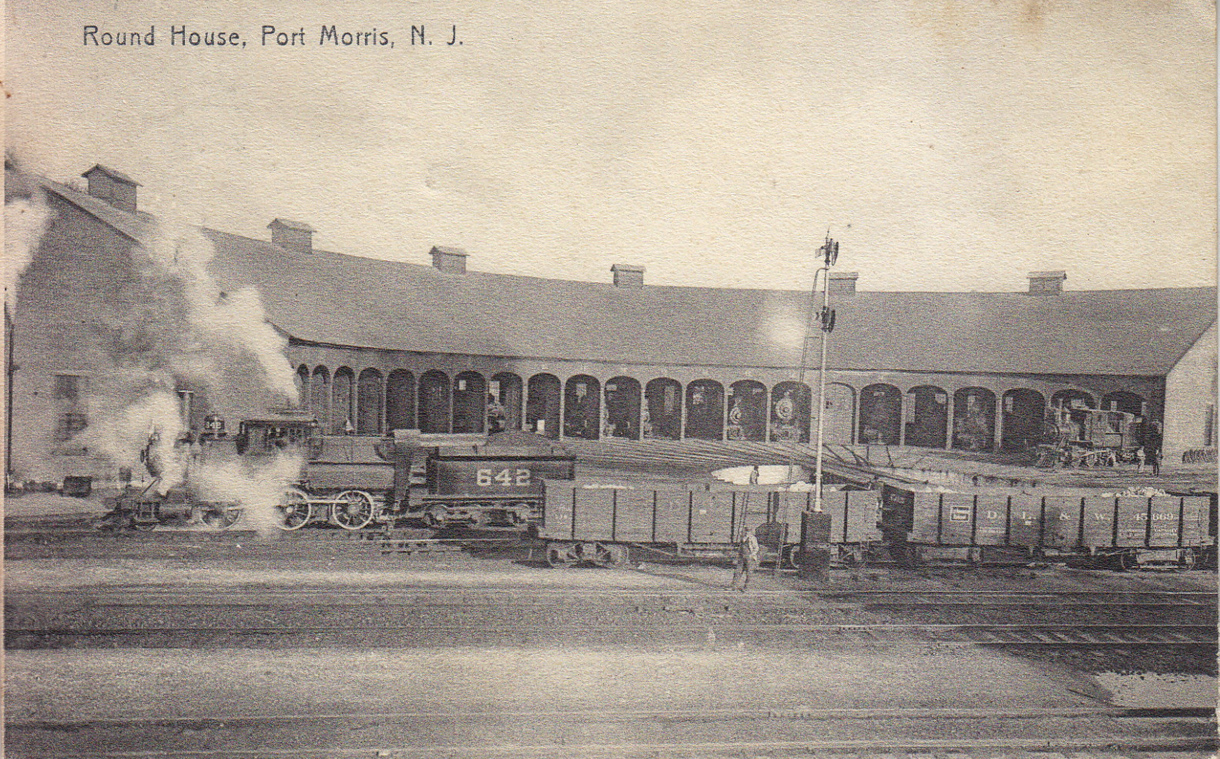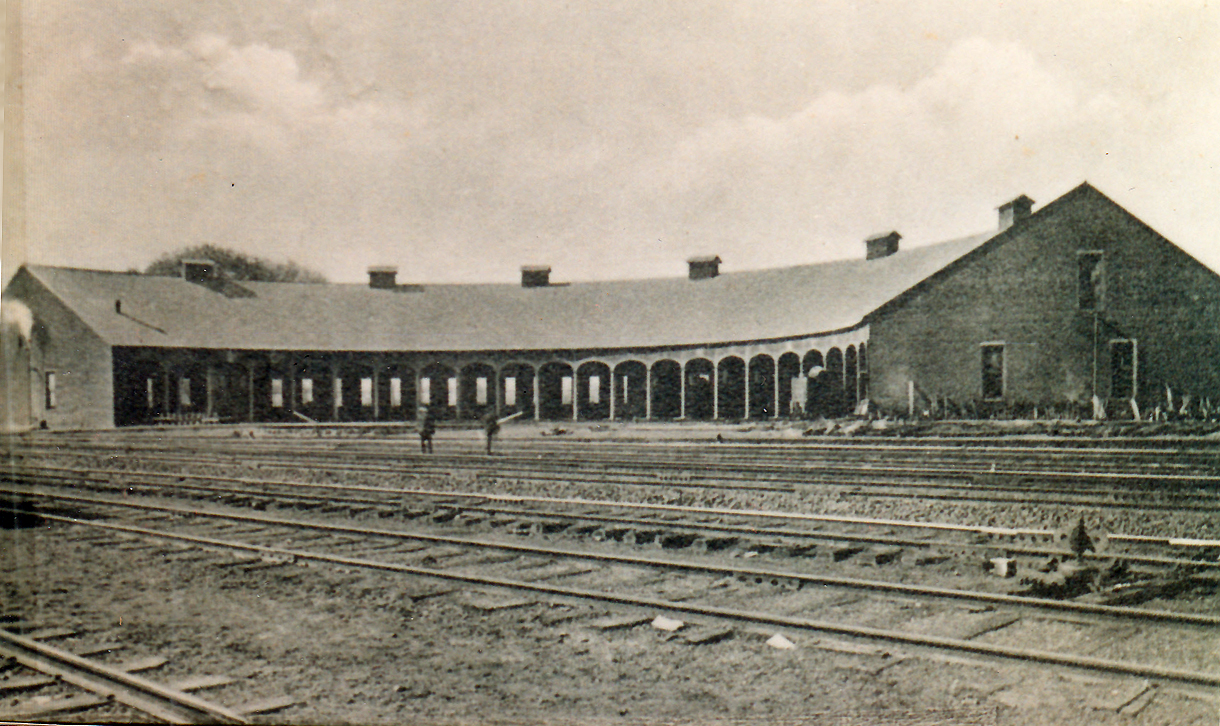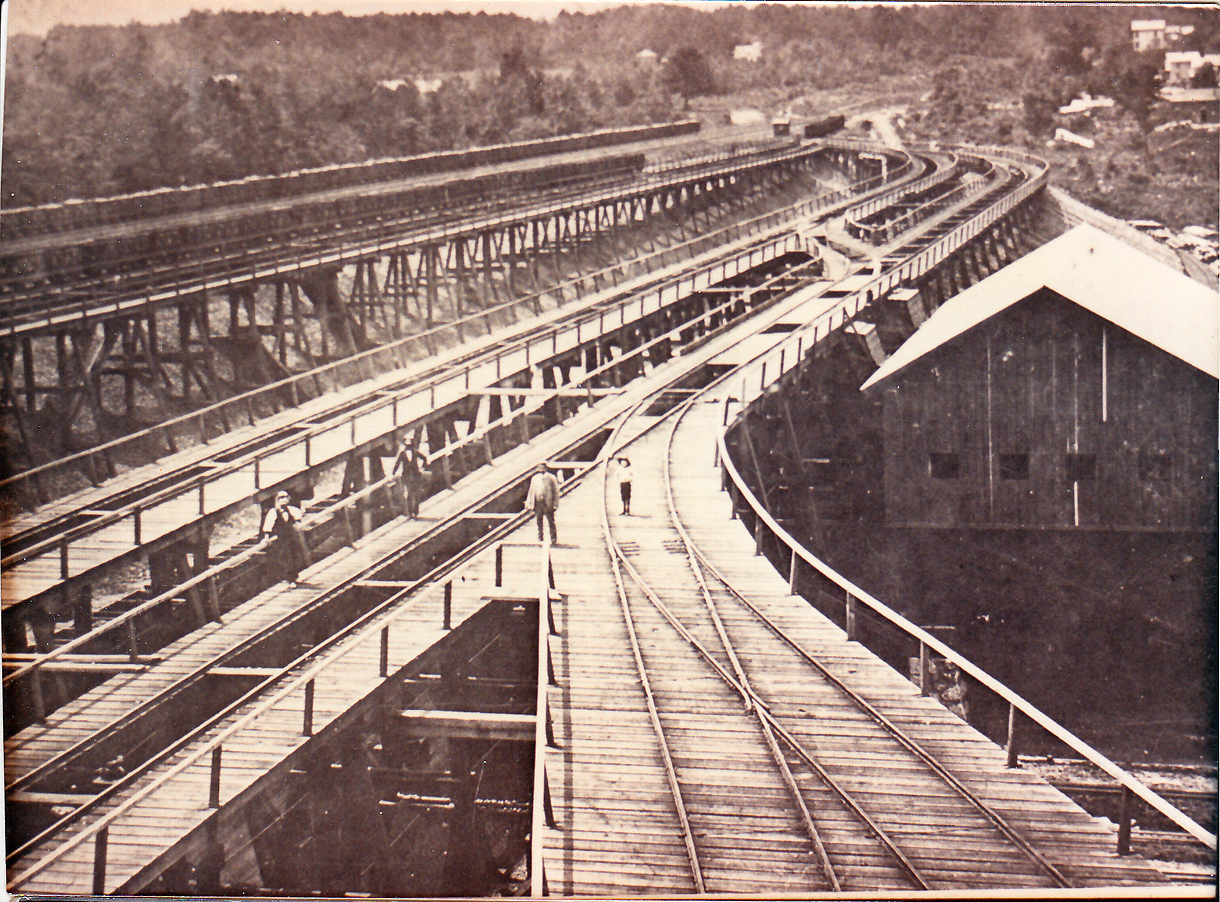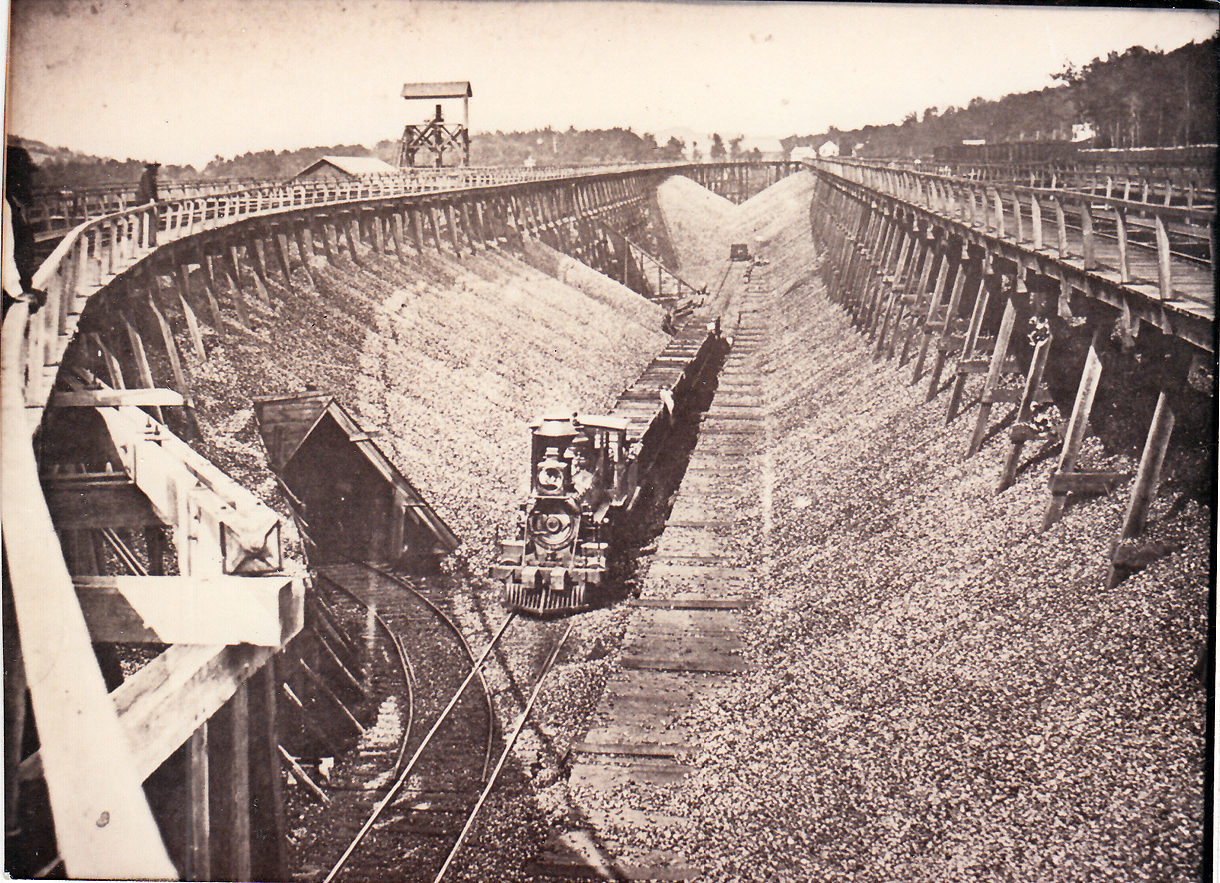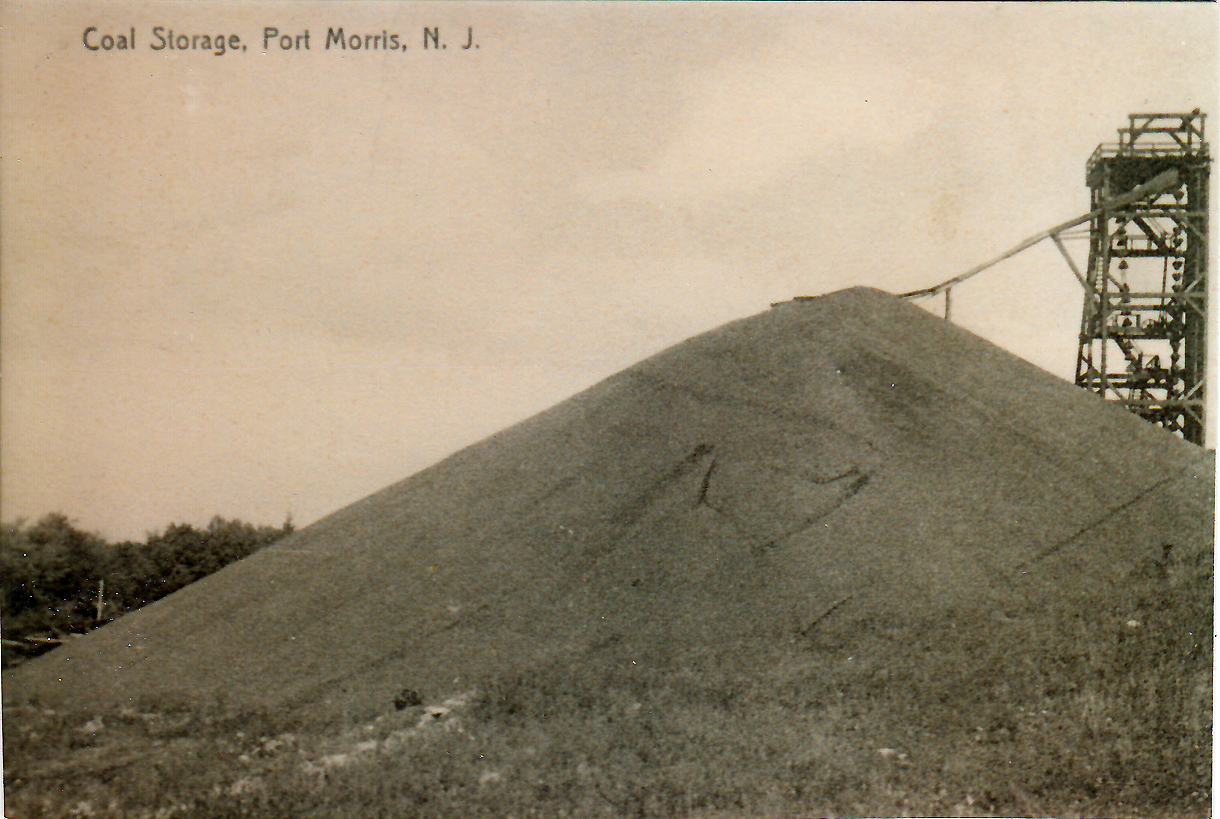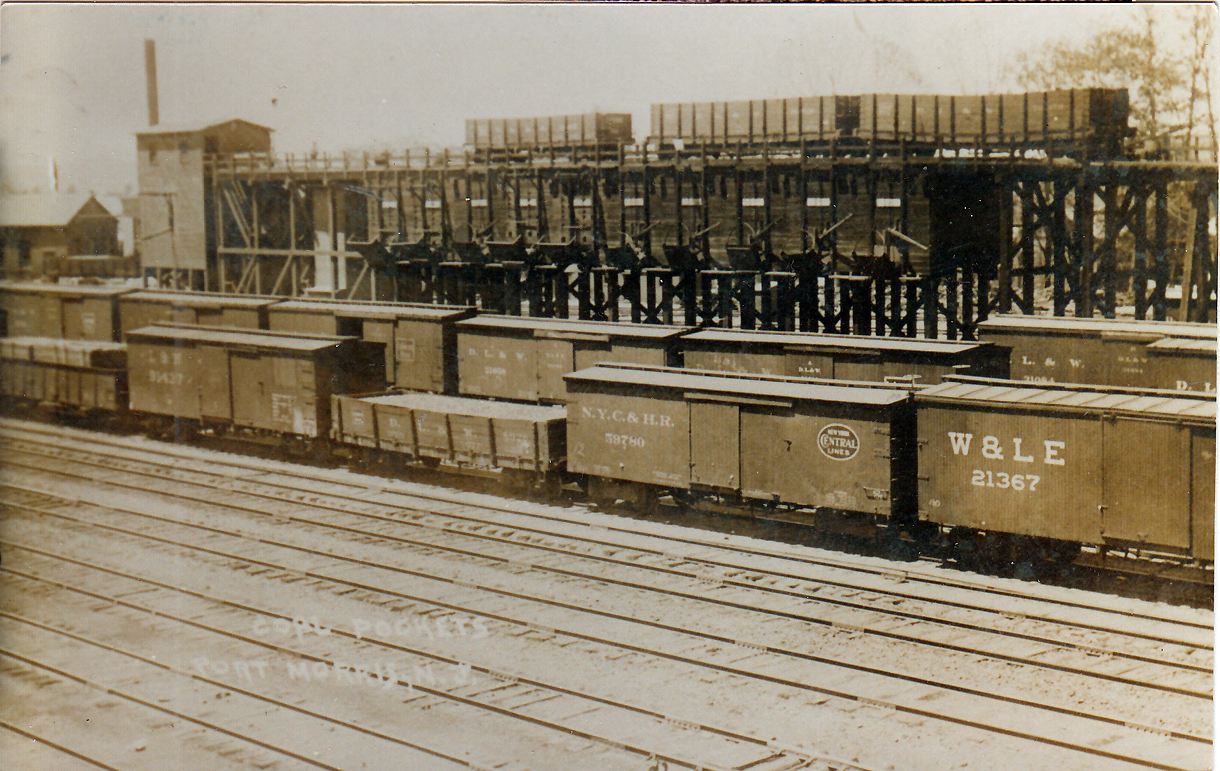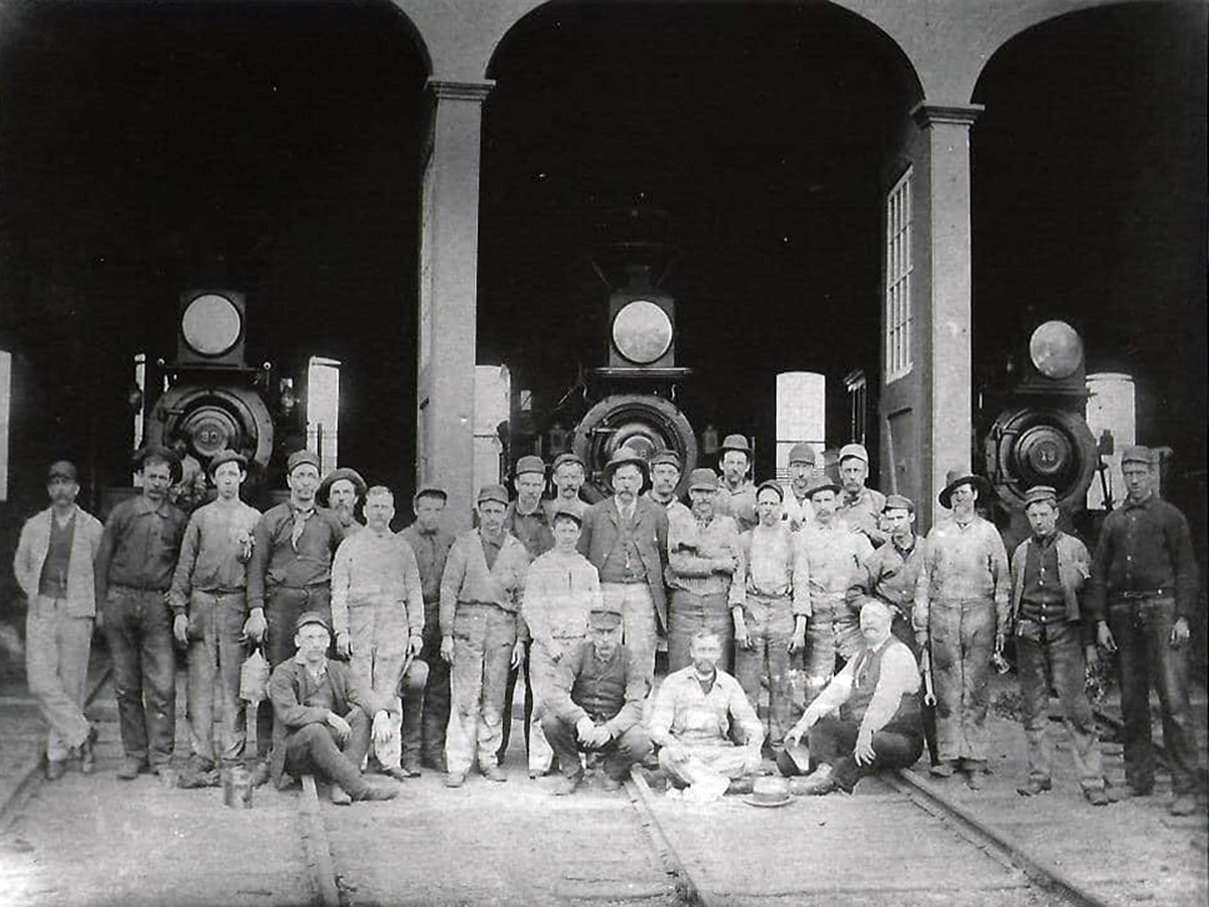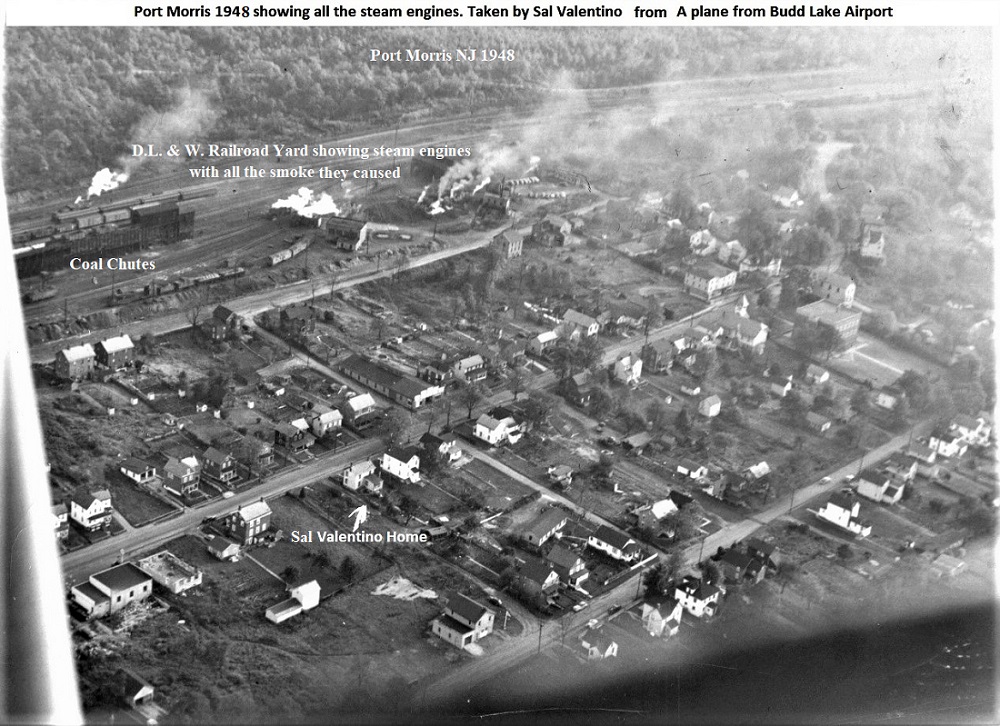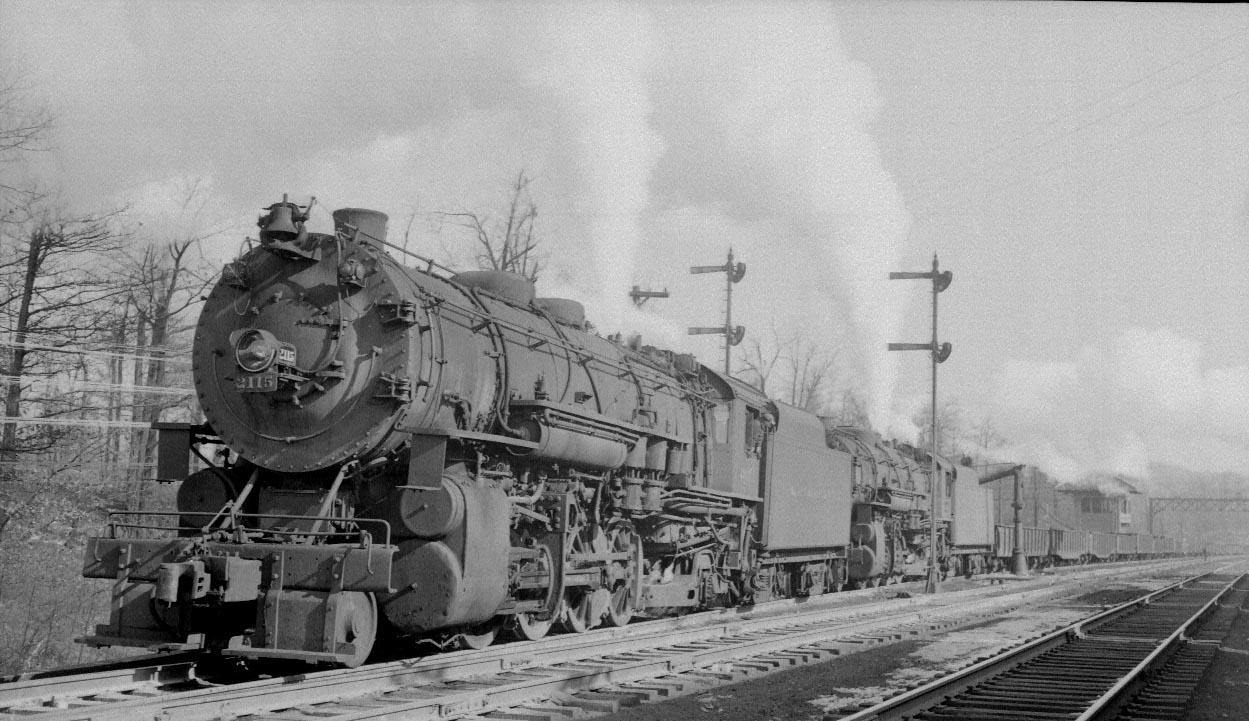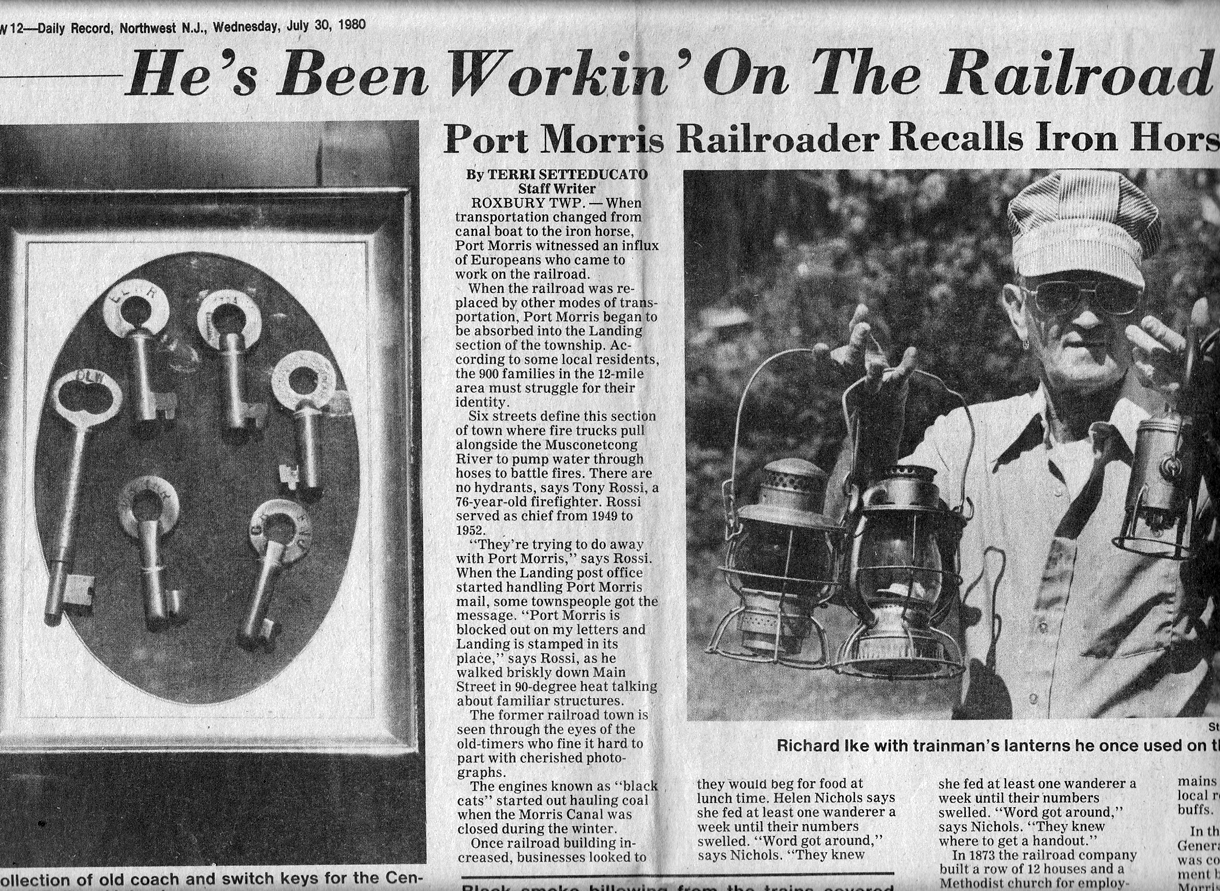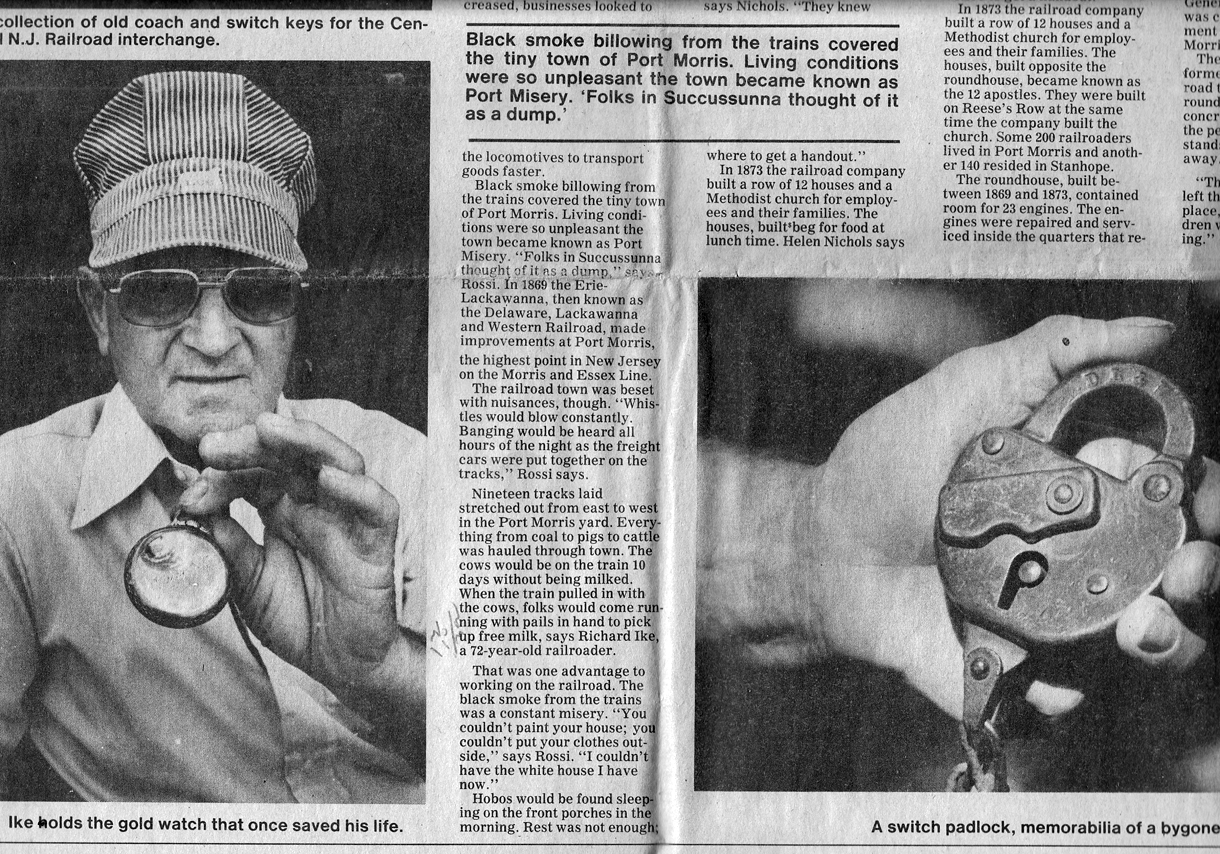|
by the website editor M.
Balston (with sources listed below)
The history of Port Morris, New Jersey is intertwined with the histories of
Landing, Lake Hopatcong, Netcong/Stanhope, Roxbury Township and Morris
County. In this short overview we will focus on Port Morris, while understanding
how these communities were interrelated.
1850's -- The tracks of the Morris and Essex Railroad (taken over
by the Lackawanna in 1868) are laid through the area around 1853, on the
route between Morristown and Hackettstown. In the Port Morris area they
ran roughly parallel to the route of the Morris Canal. No
station is built in Landing or Port Morris. Passengers going to the area
left the train at the Drakesville (now Ledgewood) crossing.
1857 -- The Morris and Essex Railroad announce increased service
on their Newark to Hackettstown Line, now with an official stop in Port Morris.
1860's -- Port Morris has a large building that
served as a Boarding House for Railway workers. A train yard now starts
to form, and in 1869 the oldest part of the Roundhouse was built by the
Delaware, Lackawanna & Western Railroad Company, newly enlarged by it's
takeover of the Morris & Essex Railroad.
1873 -- The DL & W builds a row of 12 houses for it's workers
south of the railroad tracks. These houses, along with the Roundhouse, would
firm up the position of Port Morris as a major Railway hub in these early years.
Eight of these houses still (2008) stand in their original location on Kings
Highway.
1875 -- On March 29, 1875 the
Port Morris Post Office was established with Ira Mowery as Postmaster. Also in
1875 a Methodist Sunday School was organized for the children of the Railway
Workers, numbering 20 students who met in a small building built onto the rear
of the Railway Roundhouse. By October, Sunday afternoon services of the newly
organized Port Morris Methodist Church began. Services were initially held in
the same room used for Public School during the week. Not until 1892 would the
Methodists construct their own building.
1880 -- During 1880 the amount of Iron Ore carried by the boats on
the Morris
Canal was 108,000 tons. With a boat normally carrying seventy tons, over 1,540
boat loads were needed to move this cargo. When you consider that the Canal did
not "run" on Sunday and during the coldest part of the winter (frozen
water), those 1,540 boat loads had to be moved over a span of less than 270
days, an average of over 6 boats of Iron Ore per day, beside all the other
commodity boatloads. This was the last "big" year for Canal shipping.
Things changed greatly in 1881 when much of the Canal Iron Ore business was lost
when the Central Railroad of New Jersey took over the Ogden Mine Railroad and
connected it to the Central's High Bridge Branch in 1881. Commercial shipping on
the Canal would dwindle during the next 2 decades, the quicker railroads having
taken much of the business. Port Morris would shift over these decades from
being 'Canal-centered' to being 'Railway-centered'.
THE RAILROAD TAKES
OVER
1880's -- Many Port Morris residents work in the Railway Industry
as employees of the "Morris and Essex Railroad", which was later acquired by the
"Delaware, Lackawanna & Western Railroad". A detailed 1887 map of Port Morris
(above) shows a large Railway "Roundhouse". These two decades were a time of
expansion and population growth for Port Morris, with an increasing number of
stores, a Post Office and a school. In the early 1880's the New Jersey Central
Railroad built a Passenger Station at Drakesville (modern day Ledgewood).
Horse drawn carriages would then take people up the bumpy road to Lake Hopatcong. By
1887 the Landing/Lake Hopatcong Railway Station on the Lackawanna Line was
built.
1890's --
An 1895 Atlas listed the population of Port Morris as 233, but that probably
failed to count the many transient Railway workers who lived in town.
This era also saw the blossoming of Lake Hopatcong as the Summer Resort of
choice by both the wealthy and the newly middle-class. People came to enjoy the
cool "mountain air" afforded by the one thousand foot elevation of the
Lake, a welcome summertime relief from the sweltering cities. Many would come up
for the weekend and stay in one of the Hotels or rooming houses that sprang up
around the Lake. Most everyone traveled to the Lake via Train, disembarking
either at the Central Railway of New Jersey Station at Nolans Point or at
the Landing Station of the Lackawanna Railroad. The great increase in Lackawanna rail traffic benefited Port Morris.
1910 -- The "Lackawanna Cut-off" is constructed across New Jersey
in 1910, it is a Railway Engineering marvel, running on a level plane from Port
Morris to the Delaware River. Instead of following the contours of the land, it
uses massive amounts of fill, rock cuts and long bridges to traverse valleys,
creating a level road to the Delaware River, cutting hours off the trip for the
many trains coming in from the Anthracite fields of Pennsylvania, as well as
passenger trains. Many immigrants from Italy had moved to the area to take
advantage of the employment provided by this massive project. The two large arch
bridges which still stand and cross Center Street in Port Morris are the
starting point. Many new brick homes are constructed in Port Morris at this
time, housing the conductors and other personal working on the increasingly busy
Railroad.
1920's -- The
rail yard expands to it's largest size, with an enlarged semi-circle Roundhouse of 23
stalls and a 90-foot turntable bridge to handle the mammoth Steam
Locomotives. The nickname "Smokey City" is now applied to
Port Morris, due to the Steam Engine traffic in the train yard with
belching smoke stacks.
1941-1945 -- Trains full of Tanks and other military
hardware were a common sight during World War 2, heading toward the ports in
Newark & New York. Old timers tell of seeing armed guards in the rail yard,
especially when gold bullion and other valuables were shipped through.
THE MODERN ERA
1940's-1950's -- The Rail Yard
continued to bustle along, with many Railway employees making their home here,
although the amount of rail traffic through Port Morris steadily declined after
World War 2. During this time the old Steam Engines were being retired, with
Diesels taking their place.
1960's-present -- Through the 1990's the Port Morris train yard had
a series of renovations to become a Coach Yard for New Jersey Transit Commuter
Trains. At present, Port Morris has about 1,000 residents.
©2021, 2024 , LandingNewJersey.com and M. Balston.
Much of the material
here was personally compiled by the Editor over a period of 10 years of
assembling local memorabilia. Please do not reproduce or use on
another website without permission.
Information for this page came from a
variety of sources, including:
Beck, Henry C. "TALES AND TOWNS OF NORTHERN NEW JERSEY".
1964. Rutgers University Press.
Hosking, Annie S. & Meeker, Harriet "THE HISTORY OF ROXBURY
TOWNSHIP" Vol. I & II Roxbury Township Historical
Society
Lewis Publishing, "Biographical History of Morris County New
Jersey".
1914
Munsell, W.W. "History of
Morris County, New Jersey", 1882
Murray, Stuart A.P. "HISTORY OF HOPATCONG BOROUGH" ,
1976 Hopatcong Bicentennial Committee
Seraly, Ruthann & Lyman, Frances; "OLD HOMES OF ROXBURY TOWNSHIP",
Roxbury Township Historical Society
Thompson, Mary Wolfe. "THEODORE FRELINGHUYSEN WOLFE", 1961,
privately published
The Lake Hopatcong
Historical Museum, PO Box 668, Landing, New Jersey
07850
"THE LAKE HOPATCONG BREEZE" - September, 1979.
Waldron, Robert. Long time Port Morris resident and historic researcher.
|

